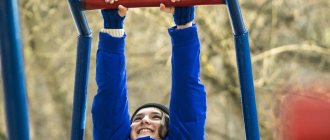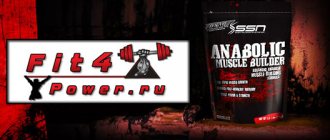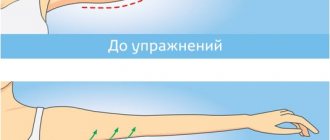Symptoms, course and consequences of colds
It's easiest to catch a cold in the spring. The most common diseases occur in the upper respiratory tract and usually have a similar course. When we have a cold, we are accompanied by a sore throat, runny nose, itchy eyes and sneezing. If we do not react in time, the disease will develop. You will experience a low-grade fever, cough, muscle soreness, and general malaise. These are viral infections that are milder than bacterial diseases.
With a viral infection, we feel that the whole body is sick and weak. Bacterial diseases are concentrated around one area, and yet the course of the disease is much worse. It is easy to get bacterial complications from a viral infection, and it is up to us how likely this will be. Therefore, taking preventive measures during infection can reduce the risk of developing the disease.
Sports for the flu
If you can exercise moderately if you have a mild cough and runny nose, you should avoid physical activity if you have the flu. The flu is very difficult and often causes complications . Flu is always accompanied by the following symptoms:
- Increased body temperature, which sometimes reaches critical levels.
- Fever and chills.
- Marked weakness.
- Sore throat and runny nose.
High body temperature is the most important contraindication to any physical activity. If you overload the body at a temperature of 37.5 degrees, then there is a high risk of developing serious complications. Most often, complications from influenza affect the heart, kidneys and lungs.
The flu cannot be carried on your feet. It is very important to maintain bed rest until complete recovery.
Quite often young people get the flu on their legs. So, if a person has chronic diseases, then the risk of complications increases significantly. Therefore, at the first symptoms of illness, a person should be put to bed.
How to check if you can exercise despite a cold?
Before training, during illness, it is recommended to measure body temperature. In general, it is allowed to exercise if you have a mild fever. A febrile state is when the body temperature is between 37 and 38 ° C. At temperatures above 38 °C, training and any increased physical activity are dangerous.
In addition, the patient should evaluate whether his condition allows for increased physical effort. If the problem is even getting out of the house, then training is strongly not recommended. And, if nothing happens on the way to the gym, you can start training.
Exercising when you have a cold: doctors have such different opinions
Let's agree that we are talking specifically about the so-called amateurs, since doctors categorically forbid training during a cold for professionals whose entire lives are devoted to training. And if we talk about the bulk of visitors to gyms and fitness clubs, then the opinions of experts are divided. Previously, it was believed that one should not exercise during illnesses, headaches, nasal congestion and other symptoms accompanying a cold. The body is already weakened during illness; it does not need additional stress. Other experts believe that sports during a cold (training as usual) will not affect recovery in any way: it will not slow it down, but it will not speed it up either. Nevertheless, doctors are unanimous on one thing - physical activity during elevated temperatures is strictly contraindicated. Also, the training itself should be done in a light mode. That is, if before illness you spent, say, an hour and a half in the gym, during it it is better to limit yourself to 40 minutes to an hour.
Exercises and testing for cold neck
If you can't decide, it's recommended to do a simple test. To find out if a cold will hurt you at the gym, let's do a neck check test. If symptoms of the disease accumulate in the area around the head and do not go below the neck, you can allow yourself to exercise at a moderate intensity. If symptoms include nausea, fever, muscle pain, vomiting and cough, avoid exercise. The best solution is to stay home and limit your physical activity. This also applies to work.
The second stage of the “neck check” test is to check the body’s response to physical activity. Training should begin with the easiest exercises and observe the body. You may find that symptoms such as a runny nose and headache during exercise disappear. Thus, if the rhinitis goes away, this means that the illness is quite mild and training can be continued. However, if your symptoms begin to worsen during exercise, you should stop immediately. It is recommended to return home and rest.
Cold training - safety
Don't forget that the neck check test does not provide 100% confidence that training while sick will be safe. What appears to be a mild cold may be the beginning of the flu. It may also be a virus that attacks the respiratory tract and heart muscle. In this case, training may worsen muscle damage and worsen symptoms.
You should definitely give up. Exercise can lead to cardiac arrhythmia and heart failure. Immunity will decrease and viral replication will increase. As a result, training will only weaken the body and lead to reduced progress in training.
Rules for training during illness
- Work out outside or avoid times when the gym is crowded - don't infect others
- Low training intensity
- Light training only - forget about heavy strength training, recommended: gentle running, jogging, low impact exercise, yoga, Pilates, stretching
- Longer rest period between sets, minimum 60 seconds
- Drink plenty of water, preferably water with lemon and honey
- Take care of rest, at least 8 hours of sleep
Due to the high intensity of effort during sports competitions, participation in them while ill is not recommended. There is a high risk of significant weakening of the immune system, exacerbation of the disease and further bacterial complications.
There is no point in participating in competitions while sick. Oxygen efficiency is reduced by 25%. Increased body temperature reduces muscle strength by 30% compared to the state before infection. It is impossible to achieve satisfactory results, and at the same time there is a high risk of deterioration in health.
How to distinguish a cold from the flu?
Both diseases are caused by viruses. While a cold is harmless and usually doesn't interfere with your workout, the flu is not so harmless. If you have the flu, exercise, even mild activity, is not recommended. Flu can lead to serious complications. How can you tell the difference between a cold and the flu?
Flu symptoms
In case of influenza, the patient has a high temperature above 38C. Fever may be accompanied by chills and sweating. If you notice these symptoms, forget about exercise. In addition, during the flu, severe pain in muscles and joints occurs. The muscles are clearly weakened (asthenia). The sensations are so painful that they make it difficult to get out of bed. The flu also lasts longer than a cold - up to 5-7 days.
Cold symptoms
Runny nose, headache, low-grade fever (below 38C). The cold should appear within 3 days.
Diseases for which you can exercise (unless your doctor decides otherwise):
- cold
- diabetes
- asthma
- allergy
Break in training depending on the number of days (weeks)
First of all, you need to determine which day of training you missed, the list of exercises, the intensity of the training, light/heavy training, which muscle group the training was aimed at - all these key points should guide your further adjustment of the training program.
However, there are general principles for planning load progression if you miss workouts.
In no case, do not include in your training program all the exercises that you missed; you will get nothing but overtraining.
Follow the tips below, depending on the number of missed training days, so that any break in physical activity affects your athletic performance possible
1 day without training
If it turns out that you didn’t go to training, then just come the next day and complete your entire missed plan, that is, move the cycle forward one day .
For example, if a standard program is scheduled for a week like Monday-Wednesday-Friday, on Wednesday you missed a training day, do everything according to plan, only on Friday (for Wednesday).
One day without training
2-4 days without training
Such a break borders on the concept of detraining , that is, partial loss of the obtained sports result, in the absence of training stress.
However, there is one nuance that will concern every athlete:
The larger the muscle being trained, and the greater the training stress, the more time is needed for recovery , and ultimately for supercompensation , so if after a hard workout you take a break of 4 days, then it is quite possible that this may benefit you.
Thus, if the break between workouts was 2-4 days , do everything according to your plan, while the working weights in the exercises can be slightly reduced/increased, depending on how you feel and the intensity of the load that should follow (light, medium, heavy).
1-2 weeks without training
In this case, we can talk about partial detraining.
After such a break, you should definitely make changes to the training plan:
- reduce working weights
- reduce the intensity of exercise
- focus on warm-up approaches
And of course, we start the training cycle, if not anew, then with those working weights with which it will be easy for you to work at the moment, usually 50-60% of the maximum.
1-2 weeks without training
3-4 weeks without training
If you are caught in a long period without training, don’t rush to get upset, everything you’ve gained in the gym has been preserved, it’s just “hidden” for a while.
Take your training program and start doing it anew. Naturally, the working weights will be small at first, but soon, thanks to muscle memory, everything will recover , and you will again be toned, pumped up and beautiful.
1 month – 1 year without training
With such a long break in the training process, it is important for you to know that everything that has been gained will definitely return within a maximum of 1-2 months of continuous training.
There are no significant differences when performing your training program. If you missed 4 weeks or 1 year , you will need to reduce your training stress, switch to light training for the first time (in this case, 1 month of training on light weights will be enough).
More than a year without training
In this case, we can say that muscle tone, strength, and athletic performance have rolled back far.
As mentioned above, what was gained in the gym in the past will be returned to you thanks to muscle memory . Moreover, the shorter the break in training, the faster you will return to your athletic results.
If we talk about specific numbers, then with a break of 1 year, 1-2 months of continuous training are needed, with a break of 2-3 years, 4-5 months . However, these are not exact numbers, because each person is individual, each of us has our own body type, some can get back in shape faster, others slower.
Even with a very long break, the body will be able, with a competent approach to training, to restore the gained strength, muscle mass and endurance, if not to the original level, then at least get close to them, unless of course your age (after 30 years, testosterone , growth hormone decreases by an average of 10% every 10 years) and medical indicators will allow.
The main thing is that the break in the training process is not caused by a serious injury (for example, a complete separation of the pectoral muscle), after which the athlete is forced to limit himself due to pain in the sternum area in working weights on the barbell and range of motion.
More than a year without training
Well, also don’t forget that when returning to a sports lifestyle, you need to increase the consumption of vitamins, minerals and high-quality proteins diet (adjust the amount of carbohydrates and fats depending on your goal: gaining weight or drying muscles).
Training after illness - when can you return to sports?
Return to training depends on the duration and intensity of the illness. It also affects a person's ability to recover. During the first few days after illness, the body will give us an answer. If we provide peace and rest during a cold, the body will recover much faster and return to shape. We can begin moderate-intensity exercise once the symptoms subside. If we still feel weak, we should wait a few days and return to training after the body gets stronger.
A case where you should wait at least a week after symptoms disappear is for severe infections associated with fever and muscle soreness. Returning to training too quickly can cause many dangerous complications. One of them is myocardial disease.
What to do to recover faster?
You should stay home when sick. This does not mean, however, that you need to spend the entire day in bed. On the contrary, it is advisable to get up and perform simple actions. It is necessary to take care of a healthy diet containing protein, plenty of vegetables and fruits, and consume plenty of fluids. During a cold, you should avoid work that causes stress, which slows down the body's regeneration. A few days of rest will have a hugely beneficial effect on getting back into shape. Ignoring the disease can lead to health problems in the future.
EcoFit.info
Is it possible to run with a runny nose, flu, sore throat and fever?
If you have a runny nose or nasal congestion, you can run if you are not feeling unwell or have symptoms below the neck. At the same time, jogging should be in a healthy mode - light and short. A short run at a leisurely pace stimulates the immune system, reduces nasal congestion and makes breathing easier. Train alone to avoid infecting others. Do not go to training if you feel unwell or weak.
You should not run with a fever, sore throat or flu - these diseases require bed rest and treatment. Exercising with such health problems can lead to complications and chronic diseases. Take a break from training, follow your doctor's recommendations and let your body recover.
Vasily Parnyakov’s opinion on running when you have a cold











